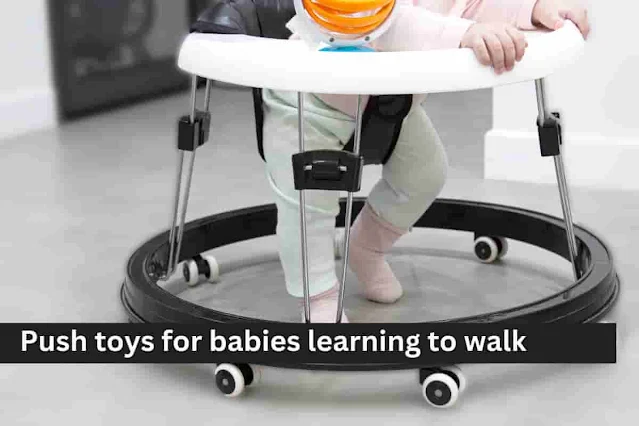Push toys can be helpful in encouraging babies to take their first steps and learn to walk. Push toys provide support and stability for babies as they practice standing and taking steps. Children develop gross motor skills, balance and coordination while push toys such as toys in front of them.
These types of toys should be sturdy and not fall easily, and the child should always be under parental supervision when using it.
Push toys alternatives
In addition to using push toys, there are many other ways to help babies develop their walking skills, such as encouraging the baby by laying him on his tummy, providing opportunities for crawling and pulling up, and exploring and exploring Creating a safe and stimulating environment for Activity, all yours It can be helpful in promoting the physical development of the child.
What are push toys and how are they helpful for the child?
Push toys are toys that babies or toddlers learn to push. These have a handle for the child to hold, and have wheels that help the child learn to walk forward.
Push toys can be helpful for children in many ways. Here are a few examples:
- Develop Motor Skills:
Push toys help children develop their gross motor skills, such as balance, coordination and strength. As they move the toy, they use their whole body and learn to move.
- Encouraging walking:
Push toys can be especially helpful in encouraging babies to take their first steps. By providing a stable and supportive base for a baby to hold onto, push toys can help babies feel more confident as they begin to walk.
- Promotes Independence:
As babies become more comfortable moving with the push toy, they can begin to explore more of their environment and become more independent.
- Providing Stimulation:
- Physical activity:
Push toys can encourage young children to be active and engaged, which can contribute to their overall health and well-being.
The physical development of the child is accelerated by the push toy, the exercise of the child is done automatically, which leads to the growth of the muscles of the child.
"Study published in the journal physical therapy in 2016 found that push toys can be a useful toy in promoting independent walking in children with developmental delays. The study followed 16 infants with Down syndrome and found that the use of a push toy significantly increased their walking ability compared to a control group"
"In 2020 review of the literature on the topic published in the journal Physical Therapy Reviews concluded that push toys are a safe and effective way to promote walking in infants and young children."
When should a baby be able to walk with a push walker?
Most babies are able to start using a push walker between the ages of 9 to 12 months.
At this age, babies are typically able to sit up without support, crawl, and pull themselves up to a standing position.
Once a baby is able to stand and cruise (walking while holding onto furniture), they may be ready to start using a push walker.
It's important to choose a sturdy, safe push walker with a wide base that won't tip over easily.
They can assess your child's individual situation and provide guidance and support.
How do I know if my child is ready to walk?
Every child is different, and some may start walking earlier or later than this range.
Here are some signs that your child may be ready to walk:
- Crawling:
Before walking, most children will crawl to get around. Once they can crawl quickly and efficiently, they may be ready to start standing and walking.
- Pulling up:
Your child may start pulling themselves up to a standing position using furniture or other objects around them. This is a good sign that they are building strength and balance.
- Cruising:
Once your child is able to pull themselves up, they may start "cruising" by taking small steps while holding onto furniture or walls for support.
- Stepping:
Your child may begin to take a few unaided steps while holding onto your hand or other support. This is a good sign that they are building confidence and balance.
Why do doctors not use baby walkers?
- Safety Hazards-
- Developmental delay-
- Hinders Natural Growth-


0 Comments:
Post a Comment